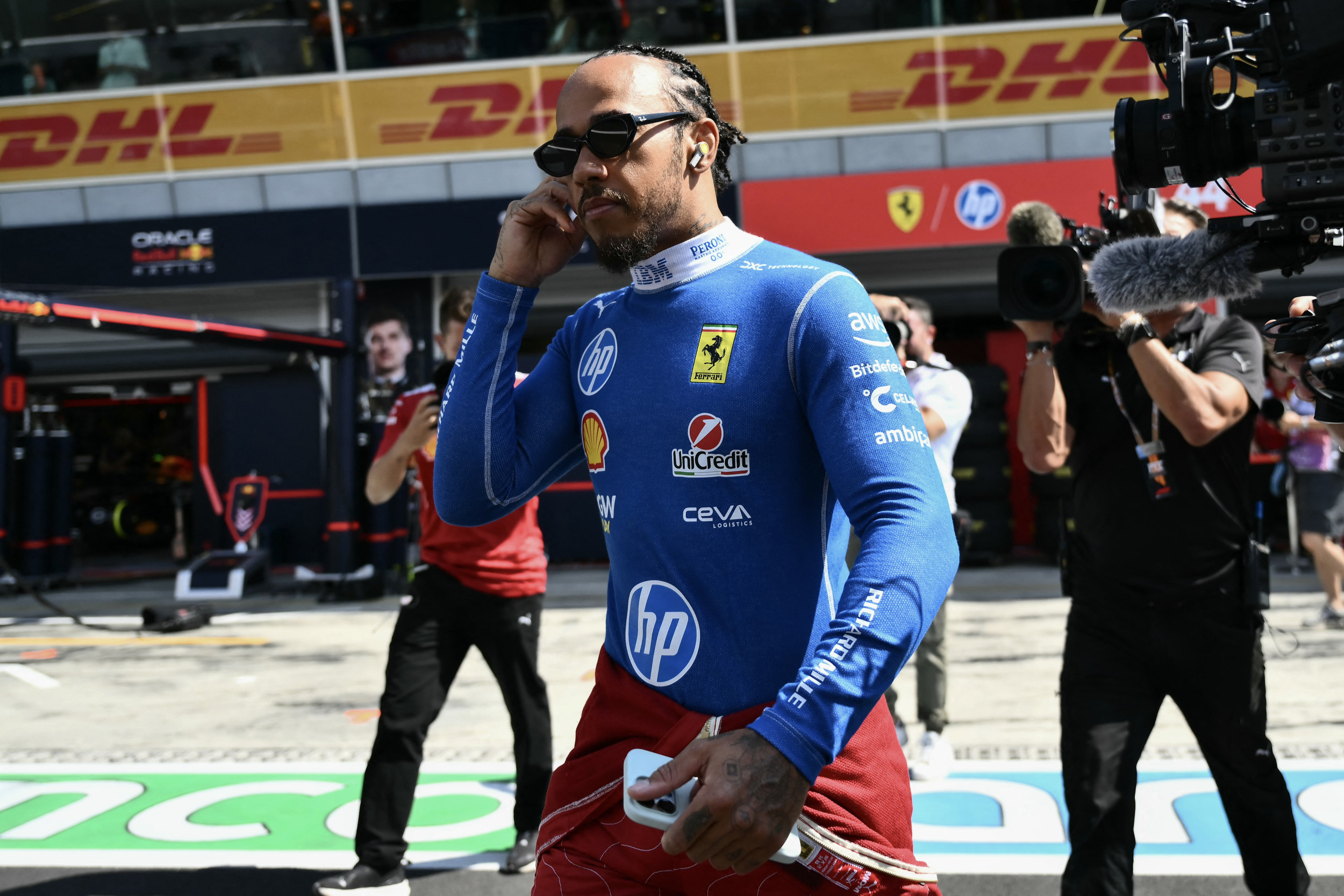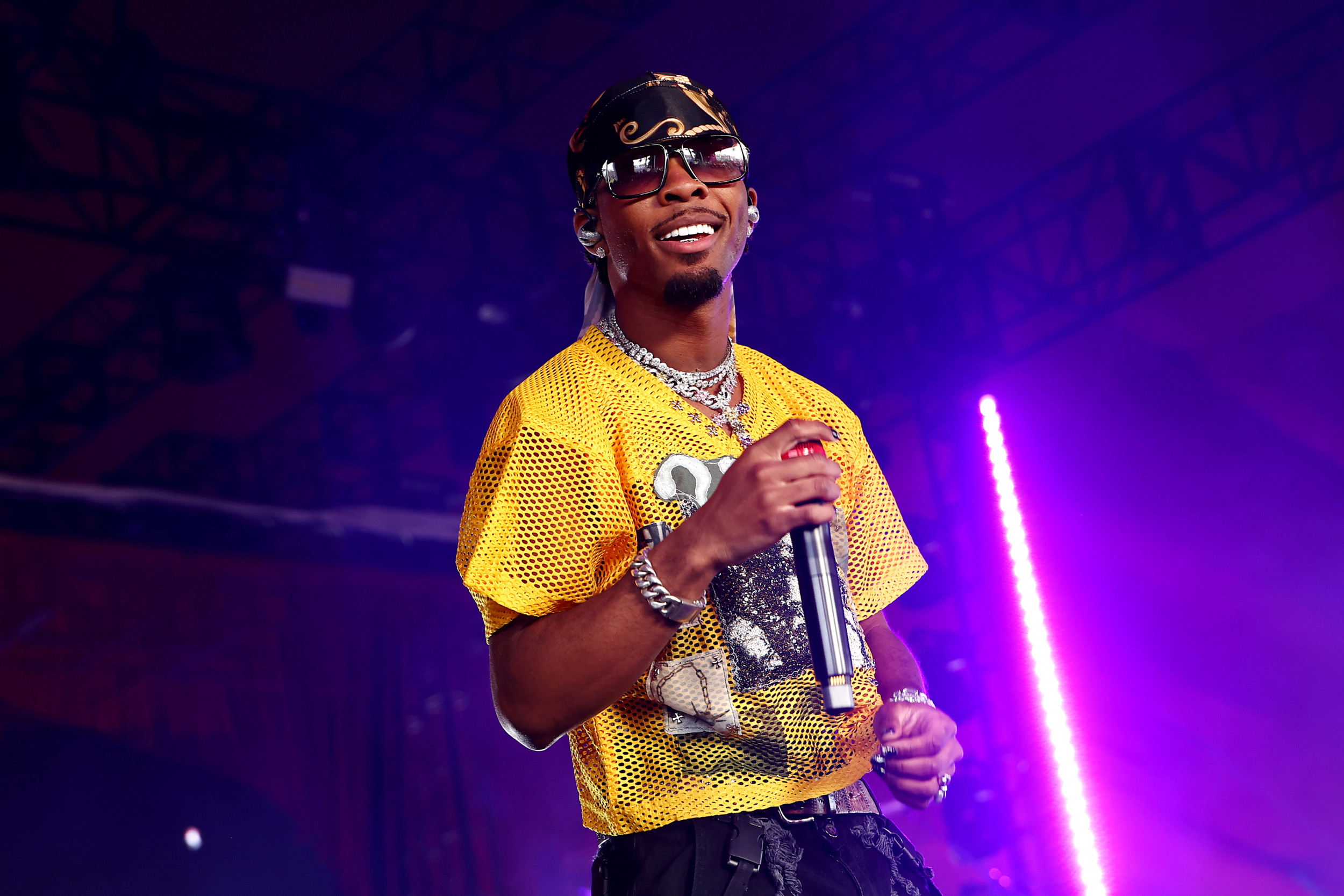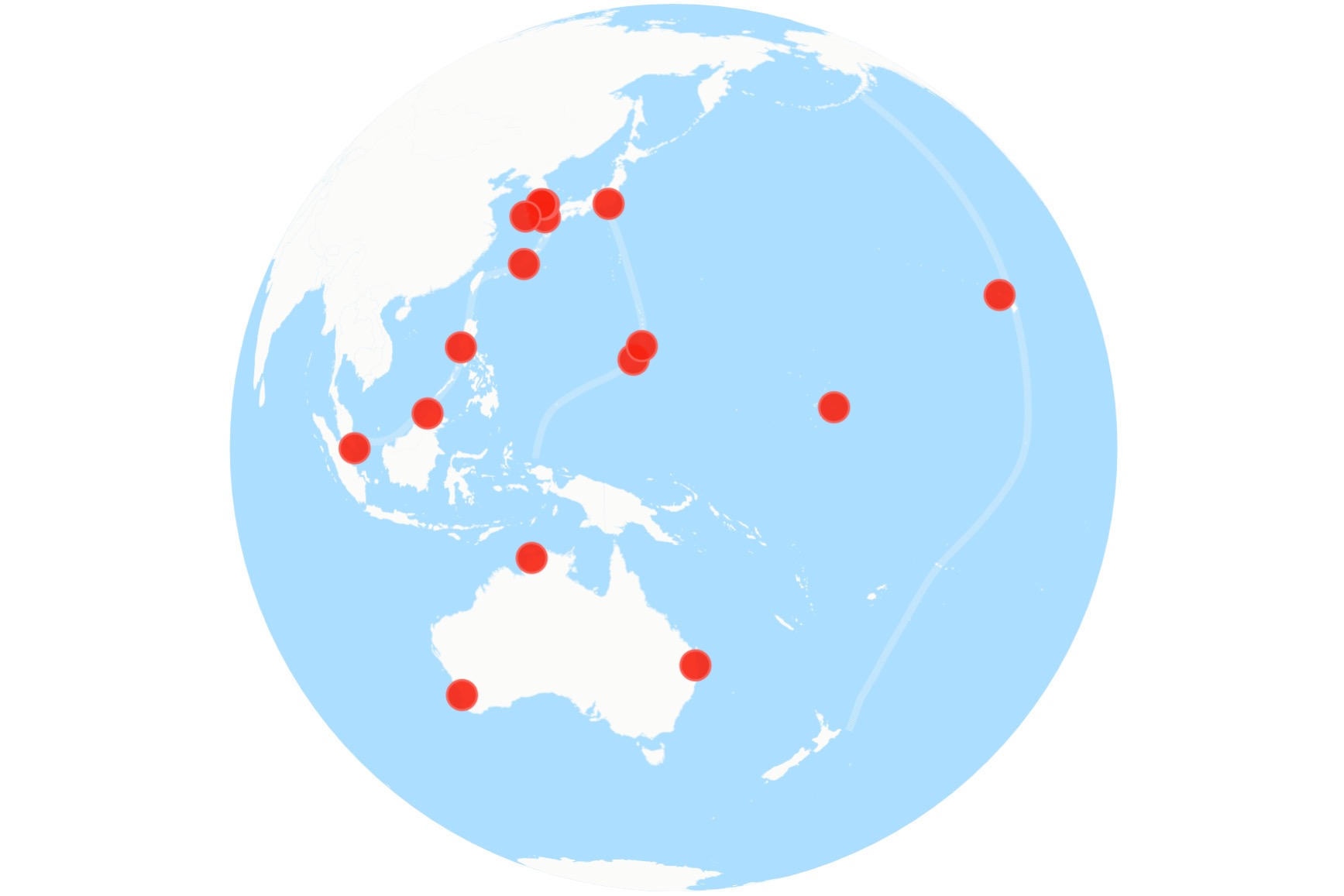
A Newsweek map shows where the United States has maintained a presence of nuclear-powered submarines across three island chains in the Pacific through deployments and port calls, as part of Washington’s efforts to contain China’s growing naval power.
“We are making historic investments in our undersea warfare capabilities and continue to work with allies and partners to maintain a secure, prosperous, free, and open Indo-Pacific,” said U.S. Pacific Submarine Force spokesperson Commander Rick Moore.
When reached for comment, the Chinese Embassy in Washington, D.C., accused the U.S. of deploying offensive weapons near China and stoking flames in the Asia-Pacific, turning the region into a “powder keg” and causing concern among regional countries.
Why It Matters
Under America’s island chain strategy, three north-south defensive lines are formed across the western Pacific by leveraging the territories of the U.S., its allies and partners. The plan projects U.S. military power to deter and defend against potential Chinese aggression, including in the contested Taiwan Strait and South China Sea.
China now possesses the world’s largest navy by hull count, with over 370 ships and submarines. In response, the U.S. military has been strengthening its naval presence across the western Pacific, including expanding submarine units homeported in Guam and Hawaii—part of the Second and Third Island Chains, respectively.
“Approximately 60 percent of the U.S. Navy Submarine Force units are homeported in the Indo-Pacific,” Moore said in an emailed statement to Newsweek on Wednesday, adding that the Pacific Submarine Force also operates a range of remotely piloted and autonomous underwater vehicles that extend its capabilities, capacity and reach.
U.S. Nuclear Submarine Fleet
The U.S. Navy operates three types of nuclear-powered submarines: attack submarines (SSN), guided-missile submarines (SSGN) and ballistic missile submarines (SSBN). Both the SSN and SSGN fleets are equipped only with conventional weapons, while the SSBN force is tasked with launching nuclear strikes using long-range missiles.
The SSN force, designed to destroy enemy naval fleets and conduct land-attack strikes using Tomahawk cruise missiles, is assigned to home ports both within and outside the U.S. mainland. Its submarines are divided into three classes: Los Angeles, Seawolf and Virginia.
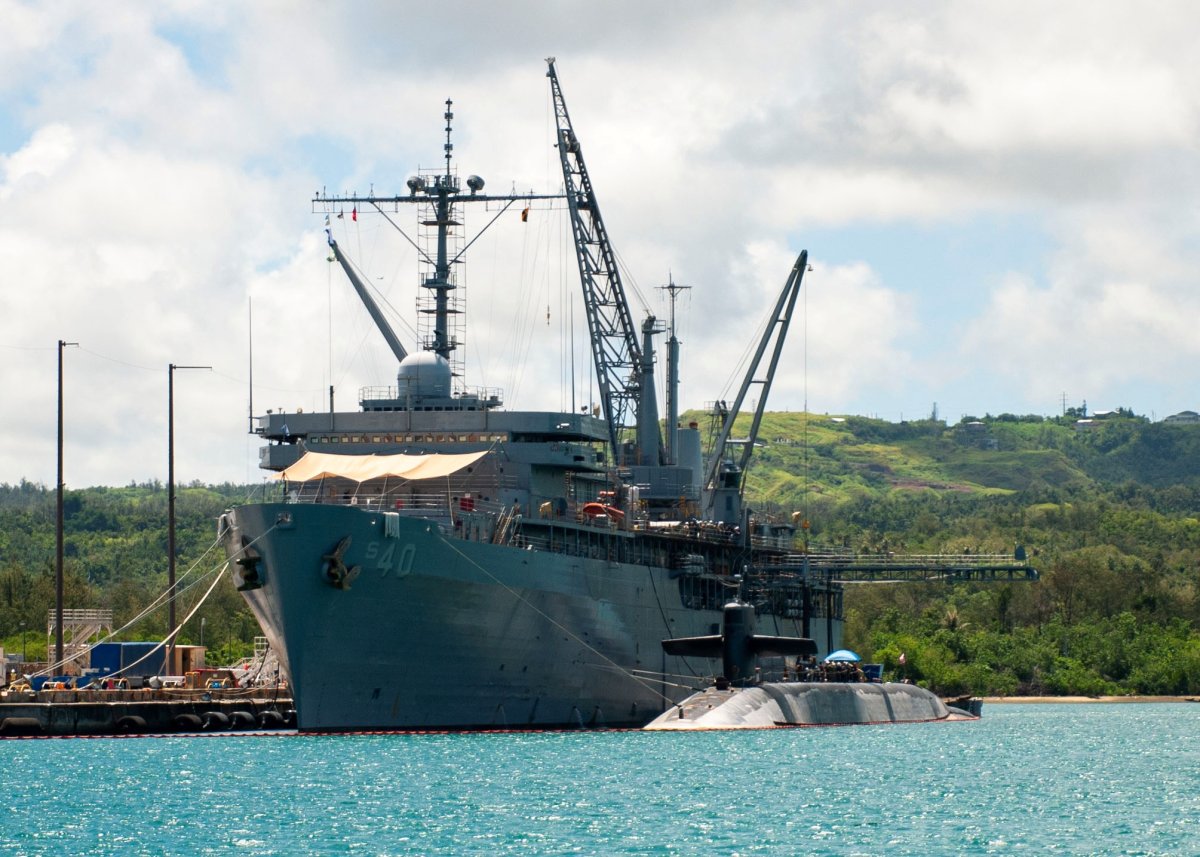
Mass Communication Specialist 1st Class Justin Wolpert/U.S. Navy
The newer Virginia-class is the most advanced submarine in the world today, according to Moore, combining stealth and payload capabilities. The older Los Angeles-class remains a “capable, tested and proven platform,” ready to conduct missions throughout the Indo-Pacific.
Regarding their home ports, the SSGN and SSBN fleets are based on either the East Coast or the West Coast. However, they have operated in the western Pacific, including a 2023 visit to South Korea by the ballistic missile submarine USS Kentucky and a 2024 cruise missile rearmament in Guam by the guided-missile submarine USS Florida.
Pacific Island Chain Home Ports
The U.S. Pacific Submarine Force is assigned three squadrons homeported in Guam and Hawaii. Submarine Squadron 15 operates one Virginia-class and four Los Angeles-class submarines out of Naval Base Guam. The island, the westernmost U.S. territory, serves as a strategic outpost for projecting U.S. military power near China.
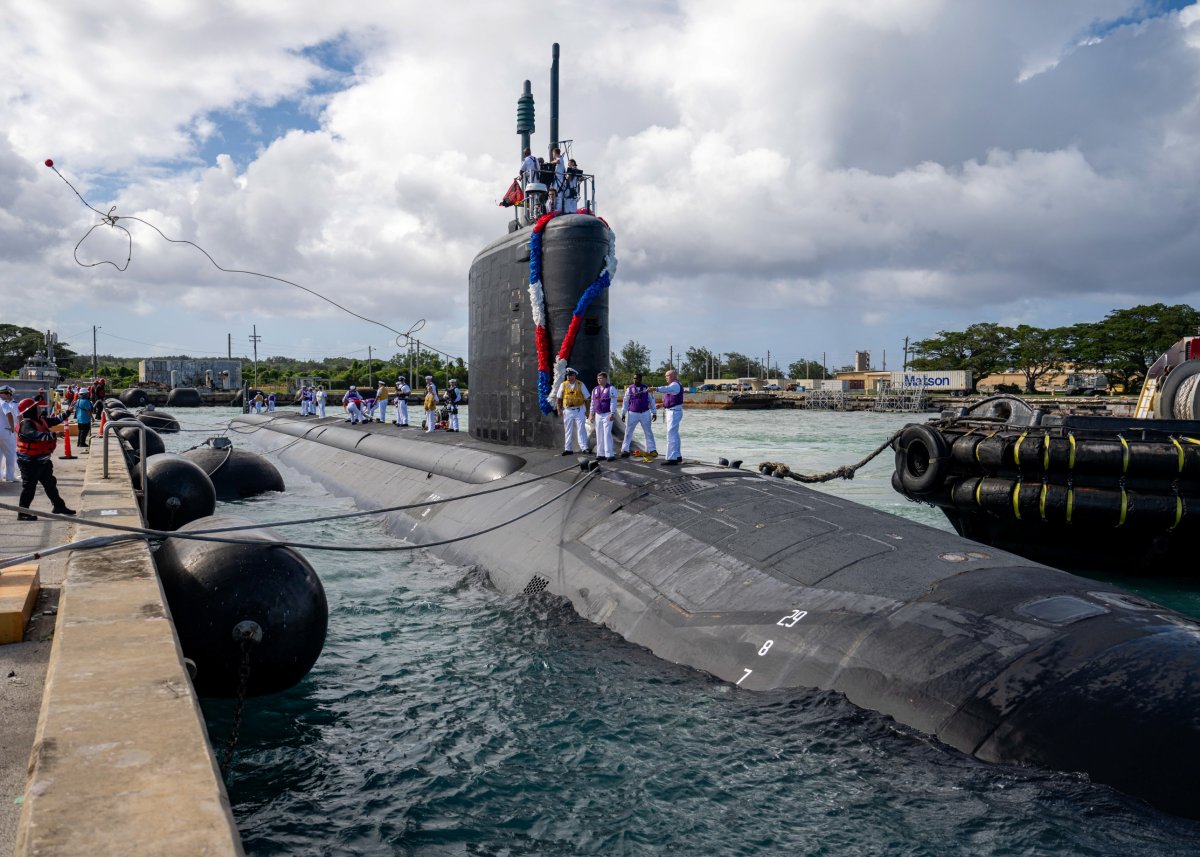
Mass Communication Specialist 1st Class Justin Wolpert/U.S. Navy
In Hawaii, Joint Base Pearl Harbor-Hickam serves as the home for both Submarine Squadron 1, which operates six Virginia-class submarines, and Submarine Squadron 7, which is assigned four Los Angeles-class and three Virginia-class submarines.
Meanwhile, the U.S. and the U.K. are assisting Australia in acquiring a fleet of conventionally armed, nuclear-powered submarines under AUKUS, a trilateral security partnership between Australia, the U.K. and the U.S. The project also calls for establishing a rotational presence at the HMAS Stirling base on the west coast of Australia, with up to four U.S. submarines forward-deployed as early as 2027.
Submarine Visits Across Western Pacific
Using officially released photos, a Newsweek map shows where American nuclear-powered submarines have made port calls in the Pacific island chains in recent years.
Japan and South Korea have often been visited by American submarines. Yokosuka and Sasebo on the main islands have received visits, as well as White Beach on the southwestern outlying Okinawa Island. Visits to South Korea took place in Busan, Chinhae and Jeju Island.
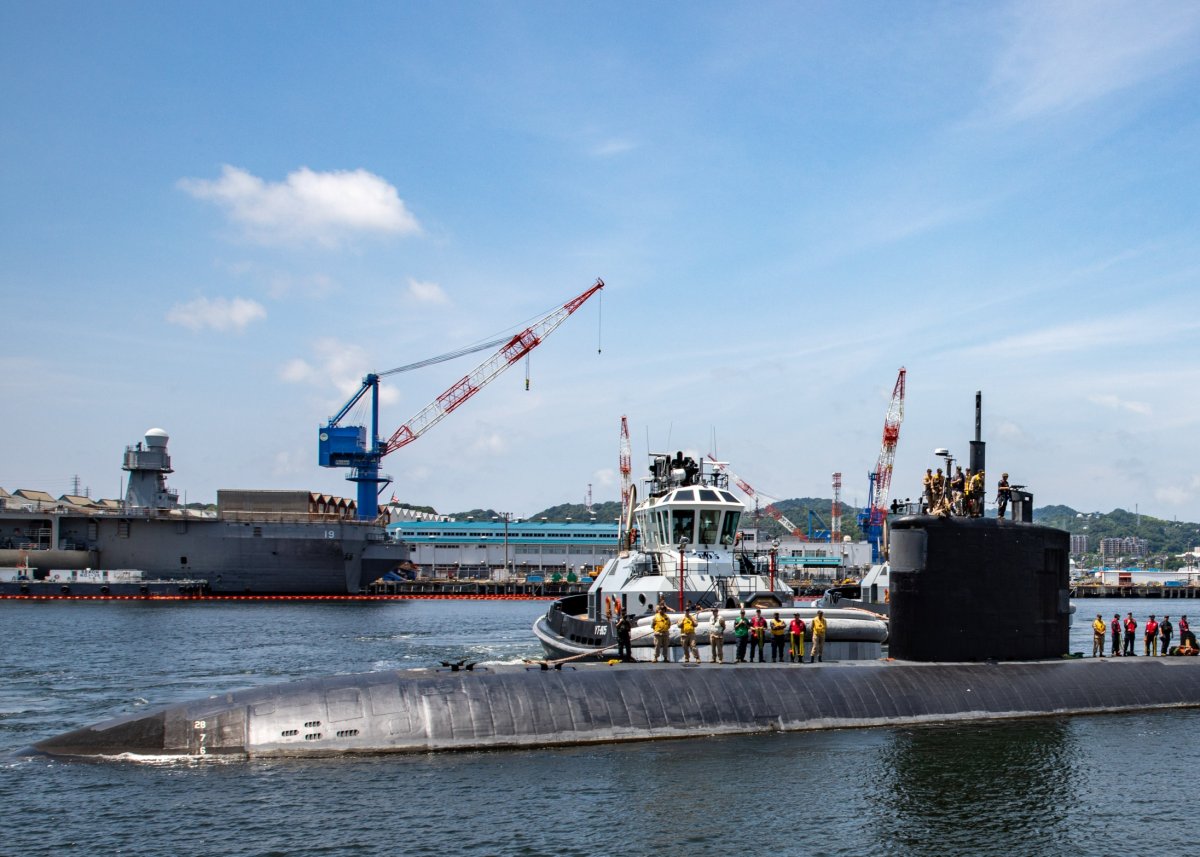
MC2 Daniel G. Providakes/U.S. Navy
Along the First Island Chain—which extends southward from Japan to Borneo and the Malay Peninsula—U.S. submarines have made stopovers in the Philippines, Malaysia and Singapore. These countries border the South China Sea, where China and regional nations have overlapping sovereignty claims that led to clashes between rival forces.
The U.S. Navy often operates in the South China Sea to assert freedom of navigation. However, in 2021, USS Connecticut, a Seawolf-class submarine, struck an object while submerged during a voyage in the region, injuring sailors and damaging its hull.
Between the Second and Third Island Chains, U.S. submarines have visited Saipan, part of the U.S.-administered Northern Mariana Islands, and the Marshall Islands.
Darwin and Brisbane in Australia have also hosted visits by U.S. submarines. The U.S. Navy considers the allied country a key logistics base to support its operations on the front line in the western Pacific.
China’s Underwater Challenges
According to last year’s Pentagon report on Chinese military power, the Chinese navy is assessed as operating a fleet of 60 submarines in three types: six SSBNs, six SSNs and 48 diesel-powered or air-independent propulsion attack submarines.
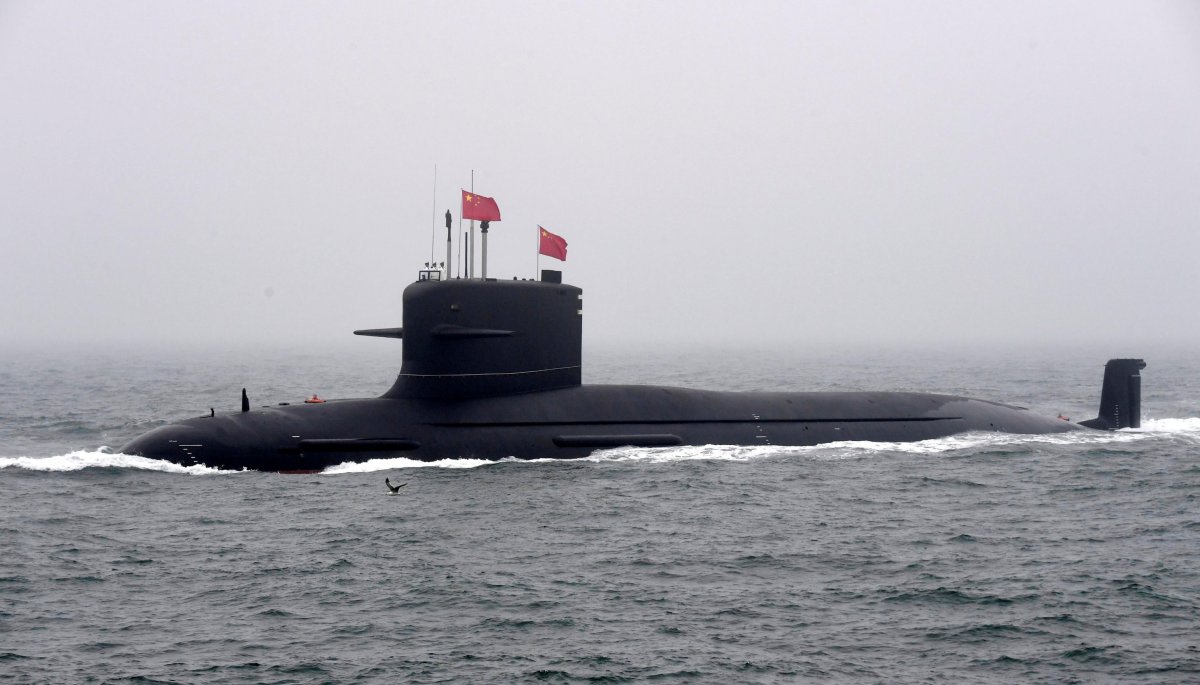
Kyodo via AP Images
The Chinese submarine fleet is expected to grow to 65 by the end of 2025 and 80 by 2035 thanks to expanded shipbuilding capacity, the Pentagon report noted. By comparison, the U.S. submarine force currently includes 53 SSNs, 14 SSBNs and four SSGNs.
China remains committed to peaceful development and the pursuit of a defensive national defense policy, Chinese Embassy spokesperson Liu Pengyu told Newsweek.
“The Pacific Submarine Force maintains a robust network of fixed and deployable underwater sensors to maintain undersea domain awareness,” Moore said, adding that American SSNs routinely operate to deter aggression throughout the Indo-Pacific.
What People Are Saying
Commander Rick Moore, Submarine Force, U.S. Pacific Fleet spokesperson, told Newsweek: “We are incorporating Artificial Intelligence (AI)/Machine Learning (ML) capabilities in our submarines and unmanned platforms. This enables our sailors to step back from the volume of raw data they actively process for improved understanding and better tactical decision-making.”
Liu Pengyu, spokesperson for the Chinese Embassy in Washington, D.C., told Newsweek: “China…firmly opposes the U.S. actions that seek unilateral military superiority, squeeze other countries’ security space, and create new tensions and confrontations. We urge the U.S. to earnestly respect the security concerns of other nations and cease undermining regional peace and stability.”
What Happens Next
The U.S. Navy may relocate additional submarines to the Indo-Pacific and deploy them along and near the First and Second Island Chains amid China’s expanding naval fleet.
